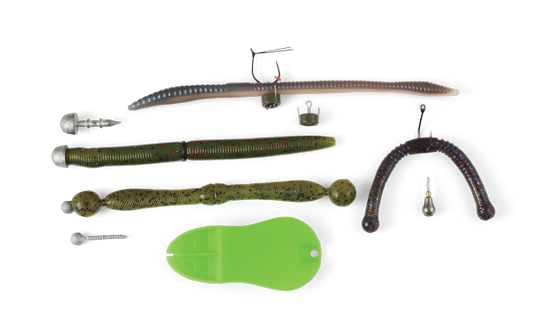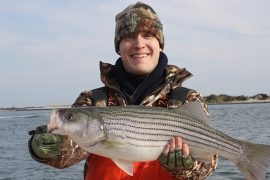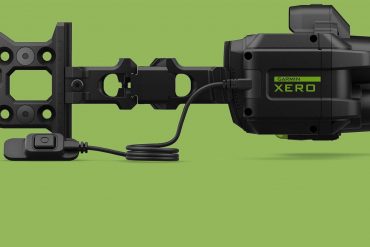
I’ve been hooking softbaits through the middle of the body for almost 40 years, since I was introduced to the “Helderberg Rig” (named for the BASS Federation club from upstate New York who apparently first popularized this technique) or “twink worm.” Bassmaster Magazine revealed its power as “Rayle’s Rig” after New York angler Brian Rayle used it to finish high in the 1980 Florida Invitational on the St. Johns River.
My first experience came at Cayuga Lake, New York, when a tournament partner skewered a Mann’s 6-inch Jelly Worm through the middle and skipped it beneath docks. I was amazed at how many he caught and it wasn’t an hour before I was emulating his trick.
I recall East Texas bassers as being the first to use the term “wacky,” as they found it deadly when cast into pockets of hydrilla that was becoming a key feature of fisheries there in the early 1990s. Over the years, wacky rigging has experienced fits of popularity, but continues to be overlooked and underused today.
Weighted Wacky

The earliest wacky rigs relied on the slow fall and undulating action of a straight-tail worm weighted only by a hook to tempt bites from reticent bass. This method works so well, many top anglers use this simple method exclusively. But in the last decade or so, I’ve found how unique worm presentations can be performed with a jighead anchoring a wacky rig. The head provides a pivot point around which a supple worm can be wiggled by shaking the rod tip. Watch its rolling action in a pool or tank to get an idea of the lifelike appeal possible. This is the appeal of the Flick Shake and other jighead setups.
Another key to its allure is that when a soft stickbait is impaled on a jighead, it wobbles wildly as it falls. Most soft sticks quiver on the fall, but a jig enhances this action. Z-Man’s ElaZtech baits are excellent for weighted rigs, as the material is highly buoyant, so the ends of the worm remain upright when it sits on bottom. And the materials’ durability means you can catch dozens of bass on one before it’s pulled free.
Some wacky baits are built with the two ends wider or equipped with enlarged appendages, notably the Lunker City Spanky, Reaction Innovations Ball Breaker, Berkley Havoc Money Maker, and Bass Assassin K.O. Wacky. When these baits fall, they produce substantial vibration that you feel through the rod. Such extra action can garner extra bites anytime. But they seem to excel when the water is less than clear, as the fall rate is reduced and vibration maximized. Case Plastics’ Wacky Jack, in contrast, has tapered ends to produce subtle shaking action that’s deadly in clear water.
Choice of weight depends on bass position in the water column and feeding attitude. A lightly weighted wacky worm is deadly when bass school in the upper layers of the water column, occasionally busting baitfish on top. Cast it where the school has gone down. A light-color lure slowly falling is hard to pass up.
Several weighting systems help present a wacky worm and reduce the tearing that happens often when heavily salted lures are hooked through the middle. Lake Fork Trophy Tackle offers Hyper Whack’n Weights, a lead collar (1/16- or 3/16-ounce) with holes for a hook, which comes with the rig.
Since the hook passes through the collar, the bait’s less likely to tear. That’s the idea behind Strictly Bass’ Wacky Keeper, which uses a short section of clear tubing with a pair of holes to accommodate a hook. The tubing takes the brunt of casting, hook-sets, and fighting fish. They’re sold with a Gamakatsu Wacky Hook.
Eco Pro Tungsten offers the Pro Wacky Weight, a disc-shaped tungsten sinker with a hole in the center for a wire insert that runs through the worm’s body and provides a loop to hold the hook. The pressure of the body of the lure on the hook keeps it secured, but occasionally weights are thrown on the jump. To save your tungsten,…





